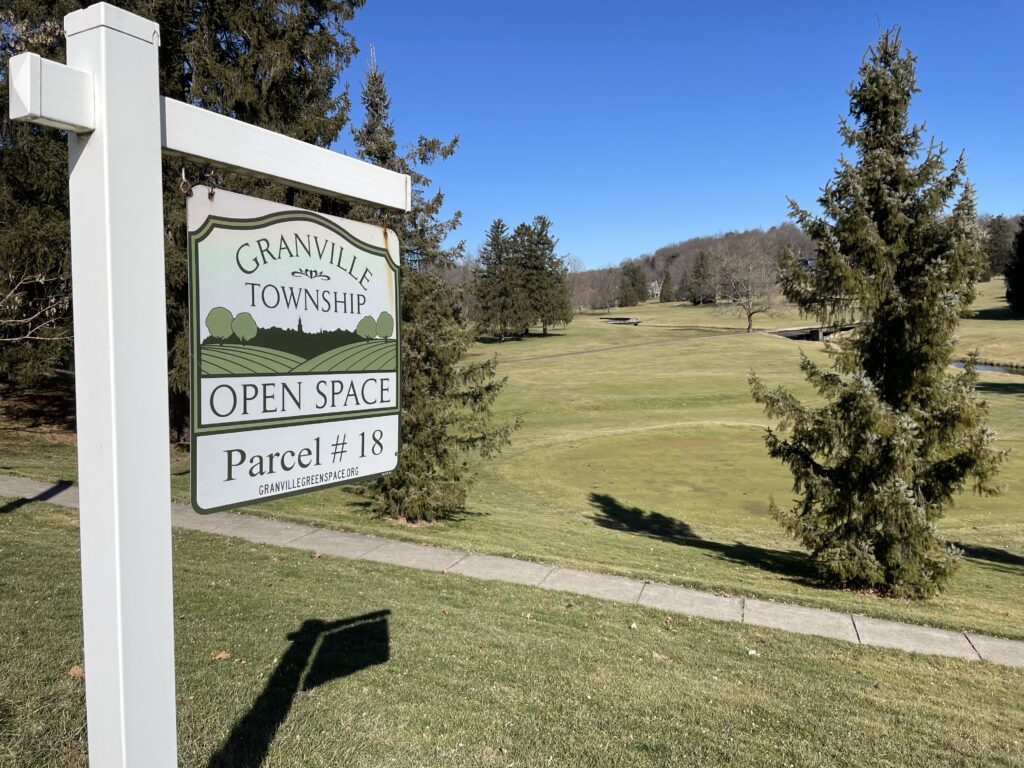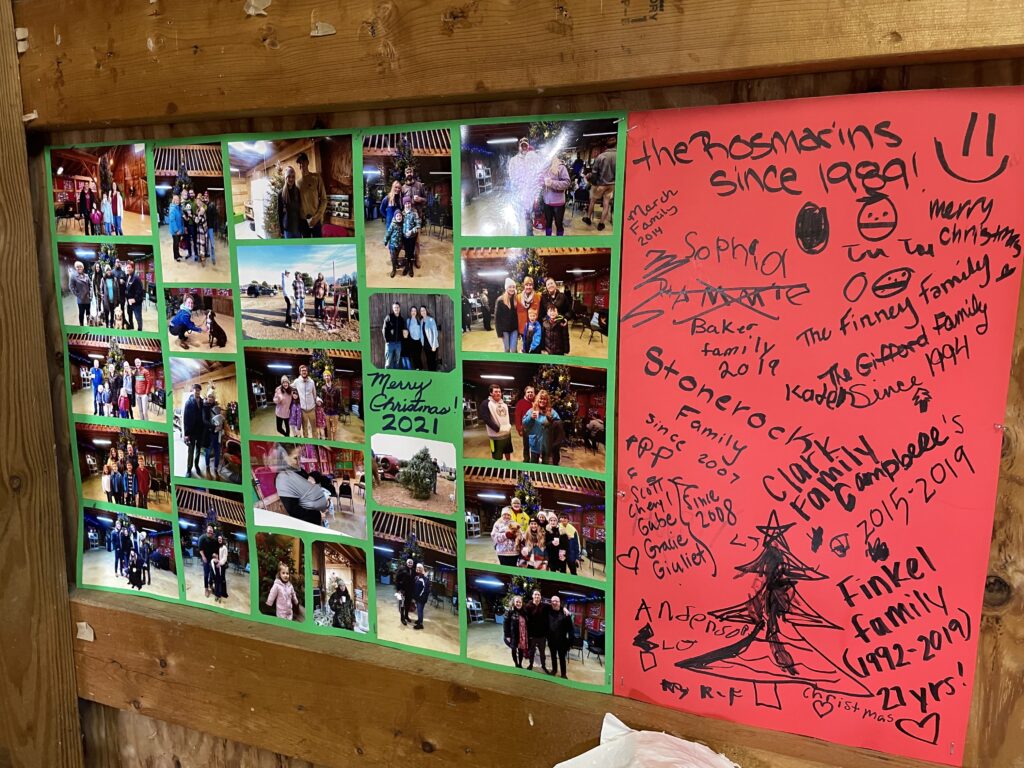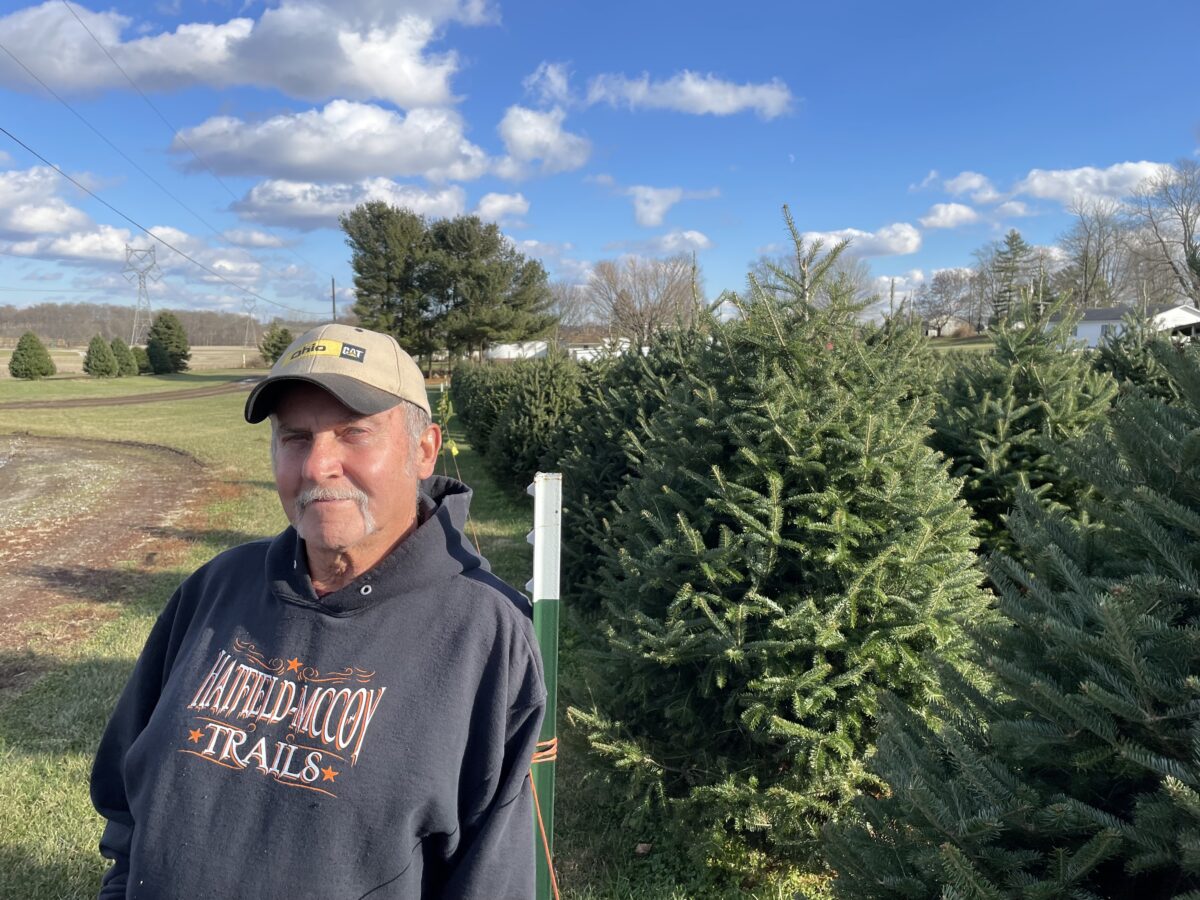Facing a wave of development pressure 30 years ago, residents of Granville and Granville Township came up with a plan to preserve green spaces.
That plan eventually included creating a fund to buy farmland and woodland, or to acquire the development rights, and residents voted to tax themselves to pay for it. The 1.0-mill property tax levy was one of the first of its kind in Ohio, effective in 1998, and has been renewed by voters every five years since then. Voters approved it again in 2021. It generates approximately $343,000 annually for a five-year period and costs property owners about $23.50 per $100,000 of valuation.
So far, the fund has preserved more than 1,814 acres as open spaces in the village and township, including the Granville Golf Course, the front lawn of Bryn Du Mansion, Spring Valley Park, Raccoon Valley Park, and a lot of farmland, according to the Open Space website. The largest among the sites is the nearly 200-acre O’Neill property along Rt. 37, just south of the intersection of Rts. 37 and 16 at the southern entrance to the village; the 185-acre Breymaier farm north of the village along Rt. 661; and the nearly 180-acre Homestead Farm, owned by the White family along Loudon Street to the northwest of the village.
Now, with Intel building what it says will be the largest computer microchip factory in the world 12 miles west of Granville, and the potential for unprecedented growth and development, the green spaces preserved through this levy are the first line of defense against rapid urbanization.
“When Newark began annexing large parcels of land on the east side of Granville Township, it was the Open Space program and the forward thinking of the trustees that stopped further encroachment,” said Granville Township Trustee Bryn Bird.

The Granville Township Open Space program can do this in two ways: an outright purchase of land or through a conservation easement, in which the owners retain ownership but agree never to develop the land in exchange for payment of the difference between the current land value as open space and the appraised value of what it would be worth if it were sold.
In addition to funds from the property tax levy, the township trustees and clerk have obtained grants to fund portions of the program, such as for the creation of parks.
Generally, the landowner is able to continue to use the land for farming or recreation but is unable to develop it. The conservation easement follows the land rather than the owner, meaning that if the owner sells the land, the next owner will be held to the conditions of the easement.
Conservation easements have two main advantages for the community over an outright purchase, according to the Open Space website. Namely, when a property is under easement, the owners are still required to pay property taxes, and the township is not responsible for maintenance costs.
An outright purchase of land by the Open Space fund grants absolute ownership of the property to the township, which must use it in the ways dictated in the levy. An Open Space committee appointed by local elected officials makes recommendations about which properties to buy or for which to purchase easements based on these criteria:
- Preservation of areas of scenic/natural beauty, as well as areas of historical or unusual geological significance that may be subject to development
- Preservation of the integrity of the comprehensive plan
- Protection of agricultural lands
- Preservation of Granville lands in danger of being annexed to other communities and/or high-density development
- Protection of edges and boundaries, village entrances, buffers, open vistas, and view sheds
The township also can place a conservation easement on land that it has purchased, ensuring that the land will remain undeveloped. If the township trustees decided to sell this land, the proceeds would be returned to the Open Space fund.
Reasons for landowner participation in the program vary. One reason to sell to the township rather than a private individual or organization is because the township can offer tax incentives that would not exist in a private sale. Another reason might be that the owners have a charitable belief in the mission to preserve open spaces.

Joe White and his family entered nearly 180 acres of Homestead Farm – a Christmas tree farm on Loudon Street, just west of the Granville Intermediate School – into the program through conservation easement in 2003.
The White’s Homestead Farm (T5 on the Open Space map) is one of several properties on Loudon Street that form a sort of firewall against development from the west. These properties to the northwest of the Granville Village center will make it difficult for developers to put together a contiguous lot of land on which they could build.
What’s more, those connected pieces of land could prove vital to wildlife. If properties in the vicinity are developed at some point, Open Space properties like Homestead Farm could be a sanctuary for animals that once inhabited the surrounding area.
“Preservation of green space is, in my mind, one of the greatest things we can do,” said Brent Sodergren, state coordinator for the U.S. Fish and Wildlife Service, “Whether that’s local park districts purchasing land, or landowners putting their properties under conservation easements, those types of things are the only thing that I see having a net positive impact on wildlife.”
The White family used the $560,000 they received in the agreement to make improvements at the farm, but White said this was not the main motivator. The big reason they signed the agreement was to preserve the property, which has been in their family for about 100 years.
Joe White, 73, said in December that he and his two sisters, ages 72 and 75, are running operations at the farm during much of the year, and they receive help from other members of the family on the weekends in November and December when they sell Christmas trees. They are worried that when it is time for them to retire, the next generation of his family might be tempted to sell or subdivide the property. Now that the conservation easement is in place, the land is safe from development.
However, “safe from development” also means that the land is not worth as much financially to the family as land that is open for development. And yet, White says he receives four to five offers a week to buy the farm, which he soundly rejects.
He said the next generation isn’t interested in raising and selling Christmas trees, which is a lot of hard work during the growing season, so the tree business is likely to close in a few years. He said the next generation is looking at other options, such as some aspect of agri-tourism.
White said the conservation easement requires them to follow strict regulations written into the easement. Despite these limitations, White does not regret that he and his family signed the easement. “If we had to do it all over again, we would,” he said.

